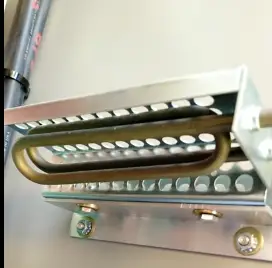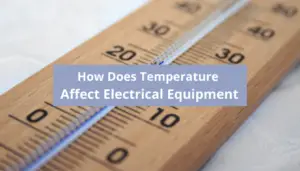As an electrical engineer, I know firsthand the importance of motor efficiency in a variety of applications.
One factor that can impact motor efficiency is voltage drop, which refers to a reduction in voltage that occurs when electrical current flows through a circuit.
In this article, I’ll explore the relationship between motor voltage drop and motor efficiency, discussing how voltage drop occurs, how it affects motor performance, and what steps you can take to mitigate voltage drop and improve motor efficiency.
Table of Contents
What is motor voltage drop?
Before we dive into the relationship between voltage drop and motor efficiency, let’s take a closer look at what voltage drop is and how it occurs.
Voltage drop is a natural consequence of electrical current flowing through a circuit, as the resistance of the circuit components causes some of the voltage to be lost as heat.
This means that the voltage at the end of a circuit is lower than the voltage at the beginning of the circuit.
Voltage drop can occur in any part of a motor circuit, including the motor windings, the supply cables, and the contactors or switches that control the motor.
In general, the longer the circuit, the greater the voltage drop will be, as the resistance of the circuit components increases with distance.
Read my in-depth article about How Distance Impact The Voltage, for more information about the effect of cable length on voltage.
How does voltage drop affect motor efficiency?
Now that we understand what voltage drop is, let’s explore how it can impact motor efficiency. When the voltage supplied to a motor drops, the motor must work harder to maintain the same level of performance.
This can result in increased energy consumption and reduced motor efficiency, as the motor must draw more current to compensate for the lower voltage.
In addition, voltage drop can cause the motor to overheat, which can lead to premature failure or damage to the motor.
When the voltage drop causes the motor to draw more current, this can increase the heat generated by the motor windings, which can exceed the motor’s thermal limits and cause damage.
Over time, repeated overheating can lead to insulation breakdown, winding damage, or other motor failures.
How to mitigate voltage drop and improve motor efficiency
Fortunately, there are several steps you can take to mitigate voltage drop and improve motor efficiency. Here are a few tips:
- Choose the right motor for the job – selecting a motor with the appropriate voltage rating for your application can help reduce voltage drop and improve efficiency.
- Use larger gauge cables – using larger gauge cables can help reduce the resistance of the circuit, which can reduce voltage drop and improve efficiency.
- Minimize the length of the circuit – by minimizing the distance between the motor and the power source, you can reduce the resistance of the circuit and minimize voltage drop.
- Check the connections – loose or corroded connections can increase the resistance of the circuit, which can increase voltage drop and reduce efficiency. Regularly checking and tightening connections can help ensure optimal performance.
- Use voltage drop calculators – these tools can help you calculate the expected voltage drop for your specific application, allowing you to adjust your design or select appropriate components to improve efficiency.
For more information read my article about The Impact of Voltage Variation (low, high, and fluctuation) on ODP Motor Performance
Conclusion
In conclusion, voltage drop can have a significant impact on motor efficiency, causing increased energy consumption, overheating, and potential damage to the motor.
However, by taking steps to mitigate voltage drop, such as choosing the right motor, using larger cables, minimizing circuit length, checking connections, and using voltage drop calculators, you can improve efficiency and extend the life of your motor.
As an electrical engineer, it’s important to understand the relationship between voltage drop and motor efficiency, and



